1. Runner's Knee
Patellofemoral pain syndrome (PFPS), or "runner's knee," is the irritation of the cartilage on the underside of the patella (kneecap). About 40 percent of running injuries are knee injuries. And 13 percent of runners suffered knee pain in the past year, according to 4,500 respondents to a runnersworld.com poll. PFPS typically flares up during or after long runs, after extended periods of sitting, or while descending hills and stairs.
WHO'S AT RISK?
Anyone with biomechanical factors that put extra load on the knee is vulnerable to PFPS, says Bryan Heiderscheit, Ph.D., P.T., director of the University of Wisconsin Runners' Clinic. Risk factors include overpronation (excessive inward foot rolling) and weak quads, hips, or glutes.
CAN YOU RUN THROUGH IT?
Yes, but taking extra rest days and reducing your mileage is necessary. Run every other day and only as far as you can go without pain. Some runners find that uphill running is less painful, so Heiderscheit recommends simulating hills on a treadmill. Uphill running has the added value of working your glutes. Strong gluteal muscles help control hip and thigh movement, preventing the knees from turning inward. Avoid running downhill, which can exacerbate pain. Bicycling may speed your recovery by strengthening the quads. Elliptical training and swimming are other knee-friendly activities.
REHAB IT
Strengthen weak hip and glute muscles with lateral side steps, says Charlie Merrill, M.S.P.T., a physical therapist at ALTA Physical Therapy in Boulder, Colorado. Place a loop of resistance band just above your ankles or your knees. Separate your feet and bend your knees, lowering down into a slightly crouched position. While staying in this position, walk sideways 10 to 15 steps, keeping your feet straight and your upper body still. Then reverse directions. Keep your feet separated to maintain band tension. When this becomes easy, try doing this on your toes with your heels off the ground. If there's a problem in the way your kneecap tracks, athletic tape may reduce pain (Merrill demonstrates knee taping at runnersworld.com/kneetape). Post-run icing also provides relief in the early stages of this injury. Heat works best once the injury is healing and no longer in an acute stage.
PREVENT A RELAPSE
Heiderscheit recommends shortening your stride length and landing with the knee slightly bent, which can take up to 30 percent load off the joint. Count the number of steps you take per minute and increase by five to 10 percent per minute. Keep your knee tracking correctly by strengthening your knee's support muscles like quads and glutes with exercises like lateral side steps and squats. It's also important to stretch your hip flexors.
ELITE TREATMENT
Eventual marathon winner Meb Keflezighi was building up for the 2010 Boston Marathon when he slipped on ice and tweaked his knee. He took two weeks off, ran only every other day for the next two weeks, and then decided not to run a half marathon in March. The strategy worked: He was the second American at Boston that year, running a 2:09.
Knee Check: How to Proceed
Pain on the inside or outside of the knee immediately upon waking, which doesn't go away as the day progresses.
Twinges early in run but often dissipates or varies intermittently. Pain returns after run. Bothersome after prolonged sitting.
Completely pain-free—even after sitting through a two-hour movie or after going on a long run with some significant incline.
- 2
- of
- 8
Get ACTIVE on the Go


Couch to 5K®
The best way to get new runners off the couch and across the finish line of their first 5K.
Available for iOS | Android


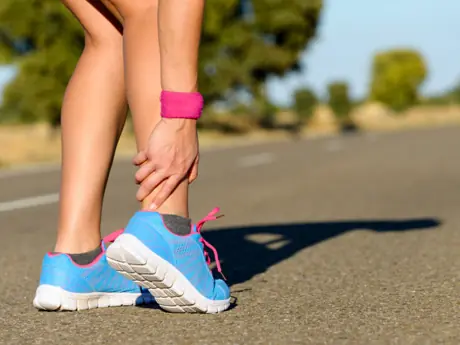
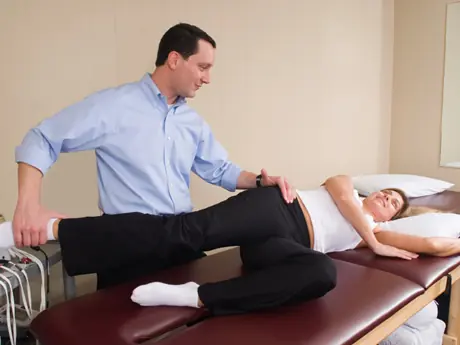
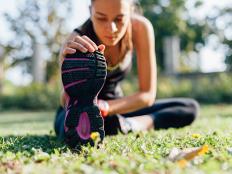
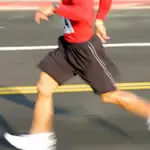
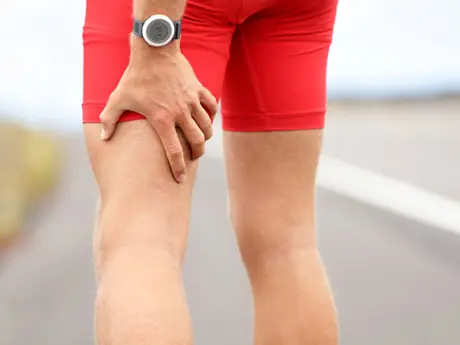
Discuss This Article